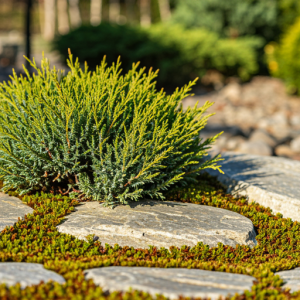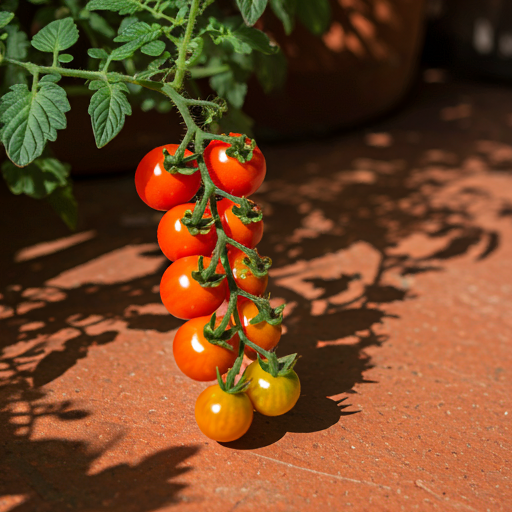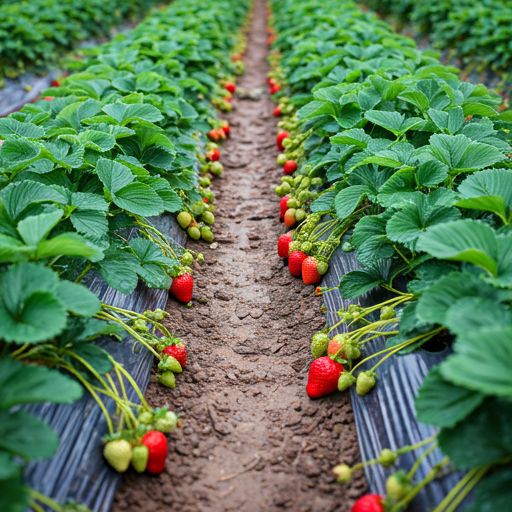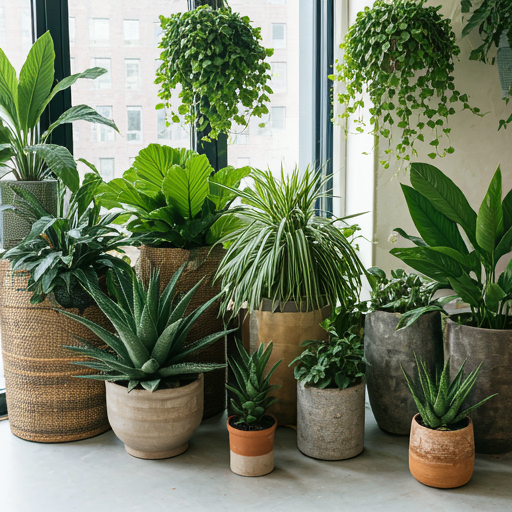Low-Maintenance Rock Garden: A Busy Homesteader’s Dream
 Welcome to my corner of the homestead! As I embrace this new chapter of life, I’m constantly learning and experimenting. And what better way to connect with nature and create a tranquil space than by building a beautiful, low-maintenance rock garden?
Welcome to my corner of the homestead! As I embrace this new chapter of life, I’m constantly learning and experimenting. And what better way to connect with nature and create a tranquil space than by building a beautiful, low-maintenance rock garden?
Let’s be honest, juggling a homestead, a family, and life’s other commitments can be overwhelming. A traditional garden, with its constant watering and weeding, might seem like a luxury I simply can’t afford. But a rock garden? That’s a different story. It’s a space that thrives on neglect, offering stunning beauty with minimal effort.
Why Choose a Rock Garden?
Here are some reasons why a rock garden might be the perfect fit for your busy homestead:
- Low Maintenance: Rock gardens require minimal watering, weeding, and fertilization, making them ideal for busy schedules.
- Drought Tolerance: Most rock garden plants are drought-tolerant, perfect for areas with limited water resources.
- Unique Aesthetics: The combination of rocks, succulents, and other drought-tolerant plants creates a visually appealing and distinctive landscape.
- Versatile Design: Rock gardens can be adapted to any space, from small patios to expansive backyards.
- Wildlife Habitat: They can attract beneficial insects and pollinators, enriching your ecosystem.
Planning Your Rock Garden: A Step-by-Step Guide
Creating a beautiful and functional rock garden involves careful planning. Here’s a step-by-step guide to get you started:
1. Choosing the Perfect Location
The first step is to select the ideal location for your rock garden. Consider these factors:
- Sunlight: Most rock garden plants thrive in full sun, so choose a location that receives at least 6 hours of direct sunlight daily.
- Drainage: Rock gardens need excellent drainage to prevent waterlogging. Select a spot with well-draining soil or amend the existing soil with gravel or sand.
- Visibility: Choose a spot where you can enjoy the beauty of your rock garden from your home or patio.
2. Selecting Your Rocks
The rocks are the backbone of your rock garden, creating a stunning backdrop for your plants. Here are some tips for choosing the right rocks:
- Size and Shape: Choose rocks of varying sizes and shapes to create visual interest and texture.
- Color and Texture: Select rocks in colors and textures that complement your chosen plants and overall landscape design.
- Durability: Choose rocks that are durable and won’t break down easily over time.
- Local Availability: Consider using locally sourced rocks to support local businesses and reduce transportation costs.
3. Choosing the Right Plants
The success of your rock garden hinges on selecting the right plants. Consider these factors:
- Drought Tolerance: Choose plants that are adapted to dry conditions and require minimal watering.
- Sun Requirements: Most rock garden plants thrive in full sun. Ensure your selections are suitable for the chosen location.
- Growth Habits: Consider the mature size and growth habit of each plant to ensure they don’t overwhelm the space or compete with each other.
- Color and Texture: Choose plants with varying colors, textures, and bloom times to create visual interest throughout the year.
Here are some popular and easy-to-care-for rock garden plant options:
- Succulents: A wide variety of succulents thrive in rock gardens, offering colorful and drought-tolerant options.
- Sedums: These hardy succulents come in a range of colors and textures, making them perfect for rock gardens.
- Sempervivums (Hens and Chicks): These miniature succulents form rosettes of foliage, resembling miniature chickens and chicks.
- Yarrow: These low-growing perennials provide beautiful and long-lasting blooms in various colors.
- Lamb’s Ears: These soft and fuzzy plants provide a textural contrast to the hard lines of the rocks.
- Lavender: Fragrant and drought-tolerant, lavender adds a beautiful purple hue to the garden.
- Creeping Thyme: This aromatic herb thrives in sunny and dry conditions, offering beautiful blooms and a delightful scent.
- Rockrose (Cistus): These drought-tolerant shrubs provide a beautiful display of colorful flowers.
4. Building Your Rock Garden
Once you’ve gathered your materials and chosen your plants, you can start building your rock garden. Here’s a step-by-step process:
- Prepare the Soil: Remove any weeds or debris from the area. Amend the soil with gravel or sand to improve drainage.
- Laying the Foundation: Start with larger rocks, arranging them to create a natural and interesting foundation.
- Planting Your Plants: Plant your chosen plants in pockets of soil between the rocks.
- Adding Smaller Rocks: Use smaller rocks to fill in the gaps around the plants and create a cohesive look.
- Mulching: Apply a thin layer of mulch around the plants to help retain moisture and suppress weeds.
5. Maintaining Your Rock Garden
Rock gardens require minimal maintenance. However, a few simple tasks can help ensure their beauty and health.
- Watering: Water your rock garden deeply but infrequently, allowing the soil to dry out between waterings.
- Weeding: Remove any weeds that emerge between the rocks.
- Fertilizing: Rock garden plants generally require minimal fertilization. You can add a balanced fertilizer once or twice a year, but avoid over-fertilizing.
- Deadheading: Remove spent blooms to encourage further flowering.
- Winter Protection: In colder climates, protect delicate plants with a layer of mulch or burlap during the winter months.
Creating a Unique and Personal Rock Garden
Remember, your rock garden is an expression of your creativity and your homestead’s personality. Don’t be afraid to experiment with different plant combinations, rock arrangements, and design elements.
Here are some ideas to personalize your rock garden:
- Adding Water Features: A small pond or fountain can add visual interest and attract wildlife.
- Incorporating Stepping Stones: Use flat stones to create pathways through your rock garden.
- Creating Focal Points: Place larger rocks or interesting sculptures to draw the eye and create focal points.
- Adding Art Elements: Incorporate garden art, such as metal sculptures, pottery, or wind chimes.
- Lighting: Add low-voltage lighting to highlight your rock garden’s beauty after dark.
Enjoying the Rewards of a Low-Maintenance Rock Garden
Creating a rock garden is a rewarding experience. It’s a chance to connect with nature, learn about drought-tolerant plants, and create a beautiful and peaceful space for yourself and your family to enjoy.
As I continue my homestead journey, I’m discovering the joy of low-maintenance gardening. My rock garden serves as a reminder that beauty can be found in simplicity, and that even with a busy schedule, I can create a space that nourishes both my soul and my homestead.






